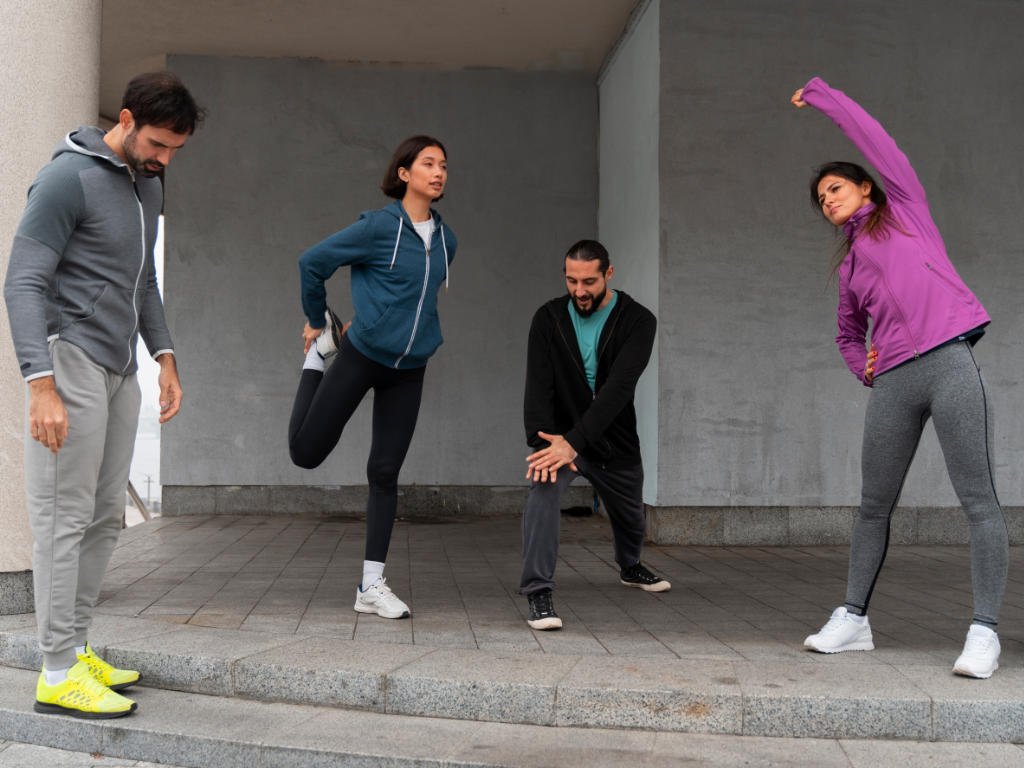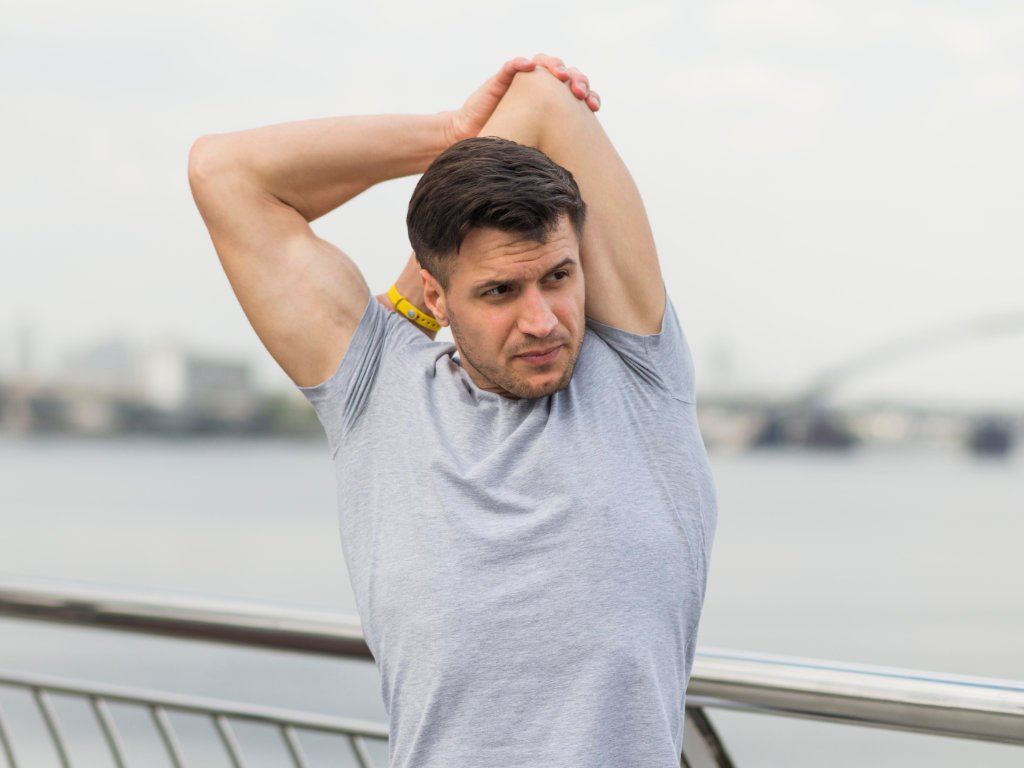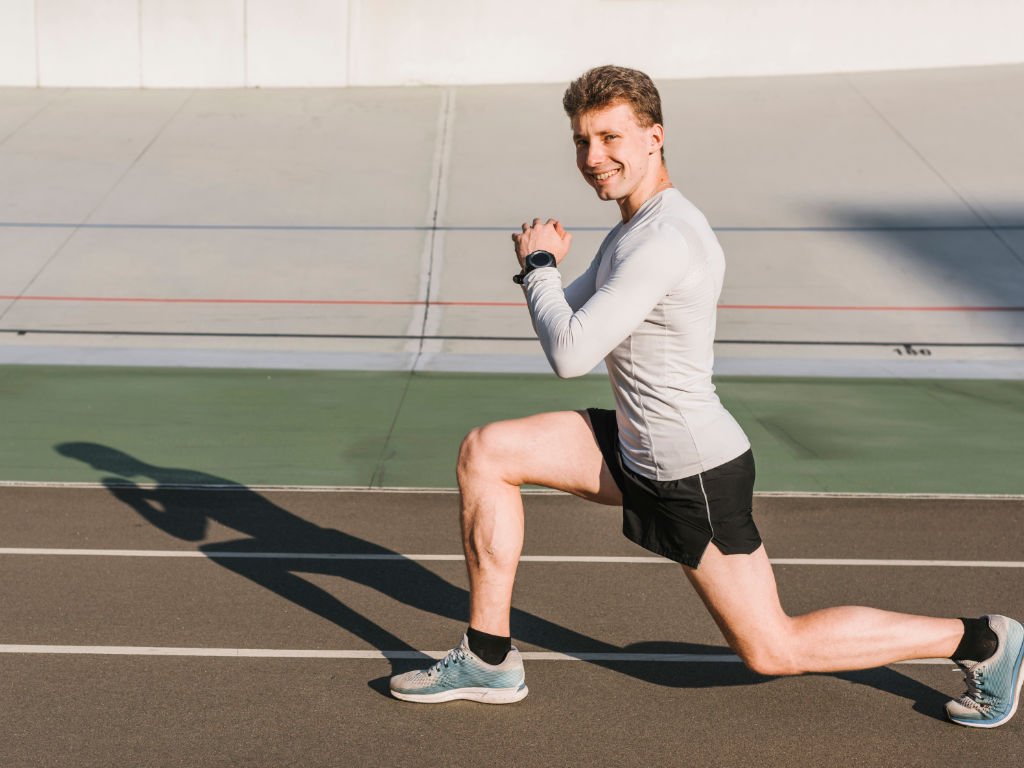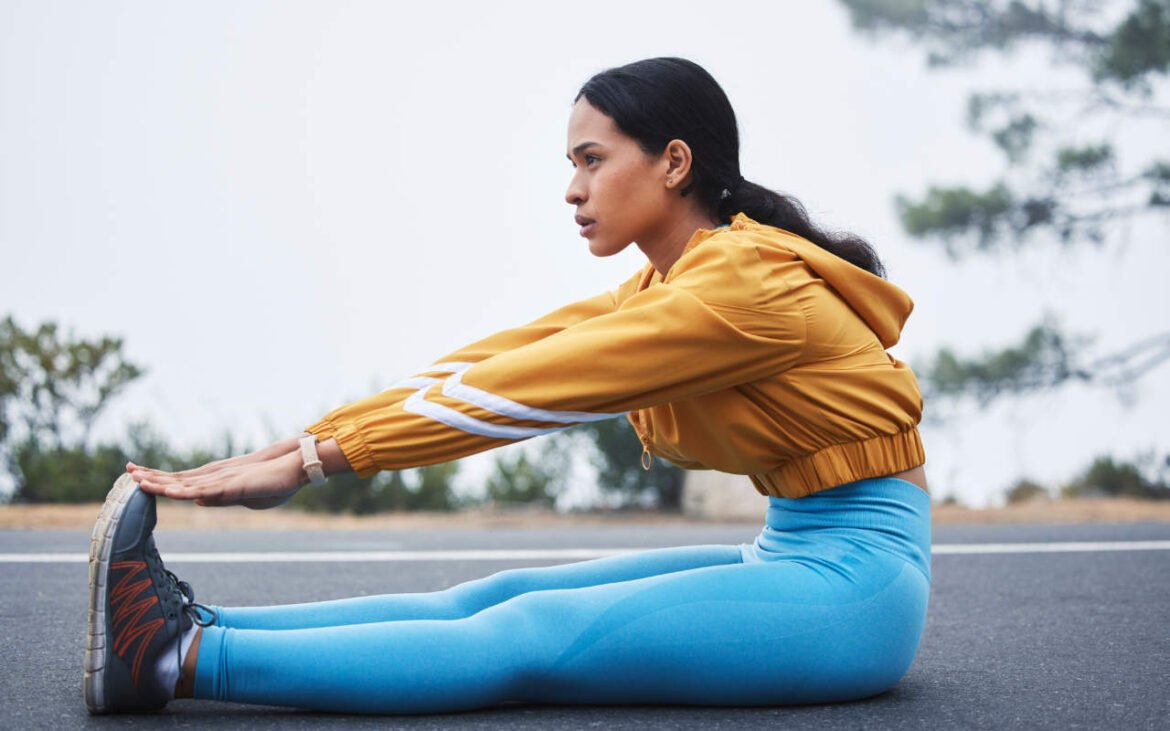Have you ever noticed how your muscles feel tight and sluggish at the start of a workout, only to loosen up after a few minutes? That’s exactly why dynamic stretching exercises should be your go-to warm-up strategy. Unlike those old-school static stretches where you hold a position for what feels like forever, dynamic stretching gets your body moving in ways that actually prepare it for action.
Think about it – when you’re about to play basketball, run a 5K, or hit the weights, does it make sense to stand still and stretch? Not really. Your body needs movement to wake up those muscles, get the blood flowing, and prime your nervous system for what’s coming next.
What Makes Dynamic Stretching Different?
Dynamic stretching involves controlled, active movements that take your joints and muscles through their full range of motion. Rather than holding a stretch in one position, you’re constantly moving – mimicking the movements you’ll perform during your actual workout.
Here’s where it gets interesting: when you do a walking lunge as part of your warm-up, you’re not just stretching your hip flexors. You’re also rehearsing the movement pattern, activating stabilizing muscles, and sending signals to your brain about what’s about to happen. It’s like giving your body a preview of the main event.
Static stretching, on the other hand, involves holding a stretch for 60-90 seconds without movement. While static stretches have their place (mainly in your cool-down routine), research shows they can actually decrease power output if done before intense exercise. That’s why timing matters so much.
The Science-Backed Benefits You Can’t Ignore
Enhanced Muscle Readiness
When you perform dynamic stretching exercises, several things happen simultaneously. Your heart rate increases, pumping more blood to your muscles. This increased blood flow raises muscle temperature, making your muscle fibers more pliable and responsive. It’s like warming up your car engine on a cold morning – everything just works better when it’s at the right temperature.
Studies have shown that muscles perform optimally when their temperature increases by just 2-3 degrees Celsius. Dynamic stretching achieves this naturally through movement, setting the stage for better muscle contraction and coordination.
Injury Prevention That Actually Works
Here’s a stat that might surprise you: incorporating dynamic warm-ups can reduce injury risk by up to 36%. That’s not just marketing hype – it’s backed by research.
The reason is simple: when your muscles are warm, flexible, and activated, they’re far less likely to experience strains, pulls, or tears during intense activity. Dynamic stretching also improves joint mobility, which means your joints can handle the stress of movement without breaking down.
Performance Enhancement You Can Feel
Want to jump higher, run faster, or lift heavier? Dynamic stretching delivers measurable improvements in power output, speed, and overall athletic performance. Research consistently shows that athletes who incorporate dynamic warm-ups into their routines see immediate improvements in:
- Power output – your muscles can generate more force
- Reaction time – your nervous system responds faster to demands
- Coordination – complex movement patterns become smoother
- Anaerobic capacity – you can sustain high-intensity efforts longer
For those following home workout routines for body transformation, this performance boost can make the difference between a mediocre workout and one that truly transforms your physique.
12 Game-Changing Dynamic Stretching Exercises

Let’s dive into specific exercises that’ll revolutionize your warm-up routine. Aim for 10-15 repetitions of each exercise, or perform them for 30-45 seconds depending on your fitness level.
Upper Body Dynamic Stretches
1. Arm Circles and Cross-Body Swings
Start with your arms extended to the sides. Create small circles, gradually increasing to larger ones. Switch directions after 10 circles. Then bring your arms across your body in a hugging motion, alternating which arm goes on top.
This simple movement prepares your shoulders, chest, and upper back for pushing, pulling, and overhead movements. If you’re planning upper body strength training, this exercise is non-negotiable.
2. Shoulder Rolls and Shrugs
Roll your shoulders forward for 5 reps, then backward for 5 reps. Follow with shoulder shrugs, lifting your shoulders toward your ears and releasing. This targets the often-tight trapezius muscles and improves shoulder blade mobility.
3. Torso Twists with Arm Extensions
Stand with feet hip-width apart, arms extended in front of you. Rotate your torso side to side while keeping your hips facing forward. This movement is crucial for sports involving rotation and helps activate your core muscles.
Lower Body Dynamic Stretches
4. Leg Swings (Forward/Backward and Side to Side)
Hold onto a wall or sturdy object for balance. Swing one leg forward and backward, keeping it straight but not rigid. Perform 10-15 swings, then switch to side-to-side swings. Repeat with the other leg.
This exercise is gold for runners and anyone doing lower body workouts. It loosens tight hip flexors, activates glutes, and improves hip mobility in multiple planes of motion.
5. Walking Lunges with Rotation
Step forward into a lunge position, dropping your back knee toward the ground. As you sink into the lunge, rotate your torso toward the front leg. Push off and step forward with the opposite leg.
Walking lunges target multiple muscle groups simultaneously while improving balance and coordination. The rotation adds a core element that translates well to athletic movements.
6. High Knees and Butt Kicks
For high knees, run in place while driving your knees up toward your chest. Keep your torso upright and pump your arms. For butt kicks, run in place while kicking your heels up toward your glutes.
These exercises are fantastic for activating your entire lower body while raising your heart rate. They’re particularly effective for runners and anyone doing plyometric exercises.
Full-Body Dynamic Movements
7. Inchworms
Start standing, then hinge at your hips to reach toward the ground. Walk your hands out into a plank position, hold for a second, then walk your feet toward your hands and return to standing.
Inchworms combine hamstring and calf flexibility with core stability and shoulder mobility. They’re perfect for preparing your body for compound movements like burpees or push-ups.
8. Bear Crawls
Get on your hands and knees, then lift your knees slightly off the ground. Crawl forward by moving opposite hand and foot together, keeping your core tight and back flat.
This movement activates your entire body while improving coordination and stability. It’s particularly valuable for those incorporating strength training for beginners into their routine.
9. World’s Greatest Stretch
Step into a deep lunge position, then place your inside hand on the ground next to your front foot. Reach your outside arm toward the ceiling, creating a twist. Hold for 2-3 seconds, then flow to the next rep.
Despite its dramatic name, this stretch lives up to the hype. It combines hip flexibility, thoracic spine mobility, and hamstring length in one fluid movement.
Sport-Specific Dynamic Stretches
10. Hip Circles and Leg Cradles
Lift one knee toward your chest, then grab your shin and pull it toward your opposite shoulder. Release and perform a hip circle before switching sides. This movement is crucial for athletes who need multi-directional hip mobility.
11. Ankle Circles and Calf Raises
Don’t forget about your feet and ankles! Perform ankle circles in both directions, then rise up onto your toes for calf raises. Strong, mobile ankles are your foundation for virtually every athletic movement.
12. Dynamic Pigeon Stretch
From a standing position, lift one knee and place your ankle on the opposite thigh. Gently pulse up and down to create movement through your hip. This is excellent for runners and cyclists who develop tight hips.
How to Build Your Perfect Dynamic Warm-Up Routine

The key to an effective dynamic stretching routine isn’t just doing the exercises – it’s doing them in the right order with proper progression. Here’s how to structure your warm-up for maximum benefit:
Start with General Movement (2-3 minutes)
Begin with light movement that gradually increases your heart rate and core body temperature. This might include:
- Marching in place with arm swings
- Gentle torso twists
- Shoulder rolls and neck movements
Progress to Movement-Specific Stretches (5-7 minutes)
Choose 4-6 dynamic stretching exercises that target the muscles you’ll use most during your workout. If you’re planning a leg day, focus on leg swings, walking lunges, and hip circles. Preparing for upper body work? Emphasize arm circles, shoulder rolls, and torso twists.
Finish with Activity-Specific Movements (2-3 minutes)
End your warm-up with movements that closely mimic what you’ll do during your workout. If you’re going to sprint, include some high knees and butt kicks. Planning to lift weights? Add some bodyweight squats or push-ups with increasing intensity.
This approach ensures you’re not just warming up your muscles – you’re preparing your nervous system for the specific demands of your workout.
Common Mistakes That Sabotage Your Warm-Up
Even with the best intentions, it’s easy to make mistakes that reduce the effectiveness of your dynamic stretching routine. Here are the most common pitfalls and how to avoid them:
Moving Too Fast, Too Soon
Dynamic stretching should be controlled and deliberate, not frantic. Start with smaller ranges of motion and gradually increase as your body warms up. Think of it as gradually turning up the volume on your muscles rather than jumping straight to maximum intensity.
Skipping the Progression
Your body needs time to adapt. Don’t jump from sitting on the couch straight into high knees and walking lunges. Allow 2-3 minutes of gentle movement before progressing to more demanding exercises.
Ignoring Pain Signals
Dynamic stretching should feel good – energizing, not painful. If you experience sharp pain or discomfort, back off or modify the movement. Remember, the goal is to prepare your body, not stress it before you even start your workout.
One-Size-Fits-All Approach
Your warm-up should match your workout. A cardio session requires different preparation than a strength training workout. Tailor your dynamic stretching routine to your specific activity.
When Dynamic Stretching Works Best
Timing is everything when it comes to maximizing the benefits of your warm-up routine. Dynamic stretching exercises are most effective when performed:
Before Your Workout – This is prime time for dynamic stretching. Your muscles are ready to be activated, and your nervous system can benefit from the movement rehearsal.
Between Different Activities – If you’re transitioning from one type of exercise to another (like moving from cardio to weightlifting), a few dynamic stretches can help reset your body.
During Active Recovery – Light dynamic movements can be perfect for active recovery days when you want to move but not stress your system.
The Recovery Connection
While we’re focusing on pre-workout preparation, it’s worth noting that your warm-up routine connects directly to your recovery process. When you properly prepare your muscles with dynamic stretching, you’re less likely to experience excessive soreness and faster to recover between sessions.
This is particularly important if you’re using muscle recovery supplements or following a structured training program. The better you prepare your body, the more effectively it can utilize recovery strategies.
Adapting Dynamic Stretching for Different Fitness Levels

Beginners: Start Simple and Build
If you’re new to exercise, begin with basic movements like arm circles, gentle leg swings, and marching in place. Focus on learning proper movement patterns before adding complexity or intensity.
Your routine might look like:
- 2 minutes of arm circles and shoulder rolls
- 2 minutes of gentle leg swings
- 2 minutes of walking lunges and torso twists
Intermediate: Add Complexity
Once you’re comfortable with basic movements, incorporate more challenging exercises like walking lunges with rotation, inchworms, and multi-directional leg swings.
Advanced: Sport-Specific Integration
Advanced athletes can incorporate sport-specific movement patterns and increase the intensity of their dynamic stretching routine. This might include explosive movements, complex coordination patterns, and longer warm-up sessions.
Frequently Asked Questions
How long should I spend on dynamic stretching?
Most people benefit from 8-12 minutes of dynamic stretching before their main workout. This gives you enough time to gradually warm up without fatigue. However, if you’re preparing for high-intensity sports or have been inactive for a while, you might need 15-20 minutes.
Can I do dynamic stretching every day?
Absolutely! Unlike static stretching, which can potentially overstretch muscles if done excessively, dynamic stretching is gentle enough for daily use. In fact, daily dynamic movement can improve your overall mobility and movement quality over time.
Should I still do static stretching?
Yes, but save it for after your workout. Static stretching is excellent for cool-downs when your muscles are warm and can benefit from prolonged lengthening. The combination of dynamic warm-ups and static cool-downs gives you the best of both worlds.
What if I don’t have much time?
Even 3-5 minutes of dynamic stretching is better than none. Focus on movements that target the muscles you’ll use most during your workout. A quick routine might include arm circles, leg swings, and a few walking lunges.
Can dynamic stretching replace my cardio warm-up?
Dynamic stretching raises your heart rate and warms your muscles, but it might not provide the same cardiovascular preparation as traditional cardio warm-ups. For most people, 8-10 minutes of dynamic stretching exercises provides adequate preparation. However, if you’re doing high-intensity cardio, you might want to include a few minutes of light jogging or cycling as well.
Building Long-Term Movement Quality
While the immediate benefits of dynamic stretching are impressive, the long-term advantages are even more compelling. Regular dynamic stretching contributes to better movement patterns, reduced joint stiffness, and improved body awareness.
Think of it as an investment in your future mobility. Every time you perform these exercises, you’re not just preparing for today’s workout – you’re maintaining and improving your body’s ability to move efficiently for years to come.
This becomes particularly important as we age or if we spend long hours sitting at desks. Dynamic stretching can counteract the negative effects of sedentary lifestyles and help maintain the mobility that keeps us active and injury-free.
Creating Your Personal Dynamic Stretching Toolkit
The beauty of dynamic stretching exercises lies in their adaptability. You can mix and match movements based on your specific needs, time constraints, and fitness goals. Consider creating different “playlists” of dynamic stretches for different situations:
The Quick & Dirty (3-5 minutes): For those rushed mornings when you barely have time but know you should warm up.
The Full Experience (10-15 minutes): Your go-to routine for regular workouts when you have adequate time.
The Sport-Specific Special (15-20 minutes): Tailored routines for specific activities like running, weightlifting, or playing sports.
Remember, the best dynamic stretching routine is the one you’ll actually do consistently. Start with movements that feel good and gradually build your repertoire as you become more comfortable with the process.
Integrating with Your Overall Wellness Approach
Dynamic stretching doesn’t exist in isolation – it’s part of a comprehensive approach to health and fitness. When combined with proper nutrition, adequate sleep, and smart training programming, dynamic stretching becomes a powerful tool for optimizing your physical performance and overall well-being.
Consider how your warm-up routine fits into your broader wellness strategy. Are you fueling your body properly before workouts? Are you getting enough sleep to support recovery? Are you managing stress levels that might affect your physical performance?
The most successful fitness enthusiasts understand that every element of their routine contributes to their overall success. Dynamic stretching is just one piece of the puzzle, but it’s a crucial piece that can enhance the effectiveness of everything else you do.
Your body is incredibly adaptable and responds well to consistent, thoughtful preparation. By making dynamic stretching exercises a non-negotiable part of your fitness routine, you’re setting yourself up for better workouts, fewer injuries, and long-term movement quality that will serve you well throughout your life.
Start with just a few basic movements, be consistent, and gradually build your routine as you experience the benefits firsthand. Your body will thank you for the investment, and your workouts will never feel the same again.


